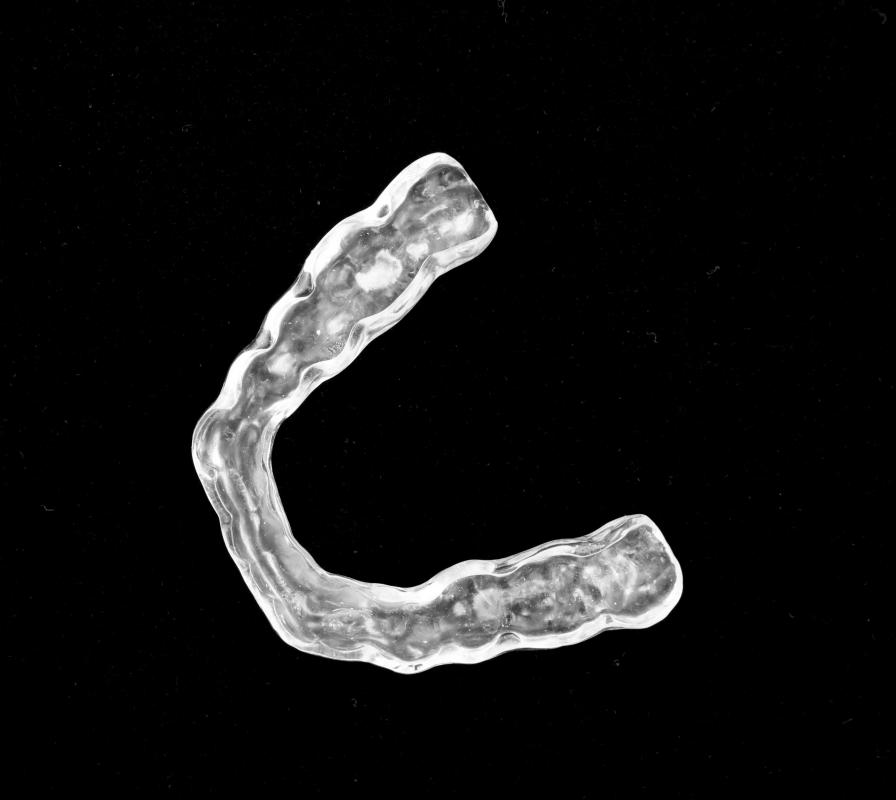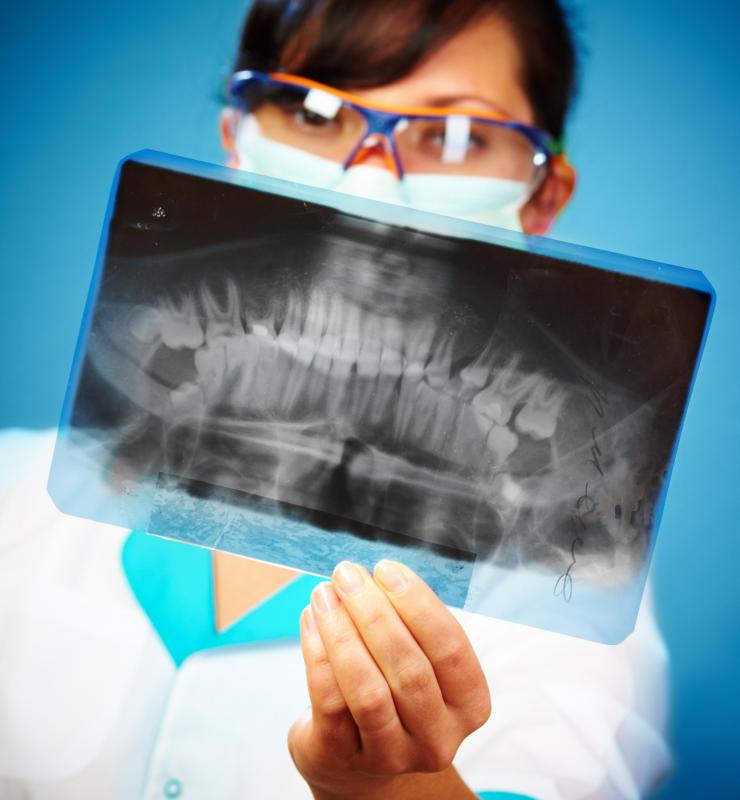At TheHealthBoard, we're committed to delivering accurate, trustworthy information. Our expert-authored content is rigorously fact-checked and sourced from credible authorities. Discover how we uphold the highest standards in providing you with reliable knowledge.
What is a TMJ Brace?
Temporal mandibular joint dysfunction is a disorder of the jaw which causes pain and discomfort. It can often be helped with the use of a TMJ brace, which is a device which fits over the teeth to help realign them within the jaw. It also helps prevent teeth clenching and grinding, both of which can make symptoms worse.
A TMJ brace, or splint, generally resembles a mouth guard or invisible braces. They are fitted to the patient’s mouth to slip over the teeth, and they slowly align the jaw and teeth so that they move more smoothly. Sometimes regular braces can also help with TMJ. In order to determine if a TMJ brace is the best course of action for each particular patient, a dentist or orthodontist will have to be consulted for testing.

Many times TMJ is caused by teeth which are not properly aligned in the mouth, grinding and clenching of the jaw, or injury to the mouth. Sometimes relieving stress can help alleviate pain by cutting down on the grinding and jaw clenching which contribute to it. Other times a brace or splint will be needed to move the teeth and jaw back into place.

It can take a TMJ brace several months to begin working noticeably, but pain should be lessened within the first three or four months. If pain worsens or does not go away, the brace may need to be refitted or adjusted for better fit the patient’s mouth. Regular readjustments are also necessary to continue the effects. Different patients will have to wear their braces for different lengths of time, depending on how severe the condition is.

Use of a TMJ brace is usually the most effective means at treating this condition, but in severe cases surgery may be necessary. This is usually on performed once several attempts at fitting and adjusting the brace have been made, and when the patient is still experiencing severe pain or has lost function of the jaw. In serious cases, patients may have trouble eating and swallowing, making surgical means of treatment more likely.

Patients should not attempt to use a TMJ brace or mouth guard without the advice of a trained medication professional. Using a device that is not intended for this purpose could lead to further injury and pain. It is not advised for patients to use someone else’s brace because each brace must be fitted for each individual’s mouth.
AS FEATURED ON:
AS FEATURED ON:


















Discuss this Article
Post your comments